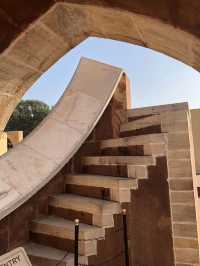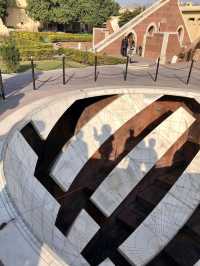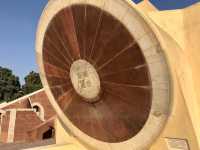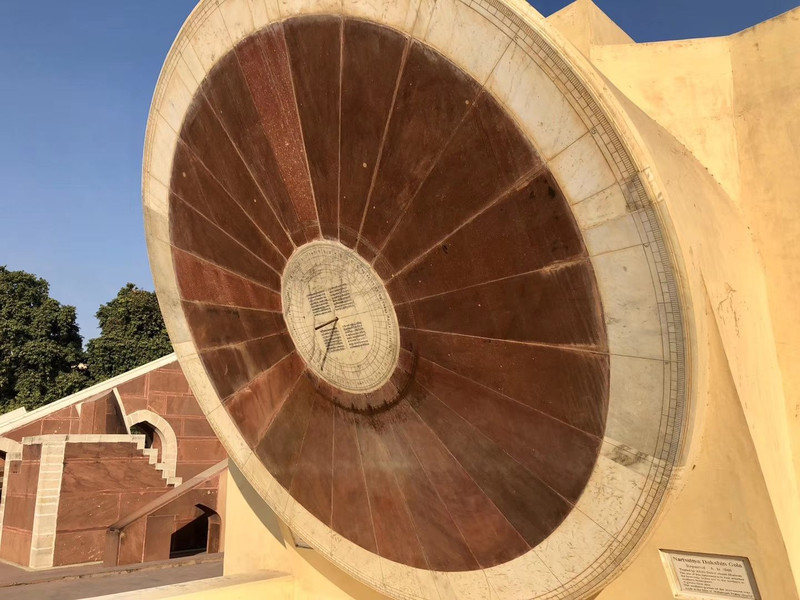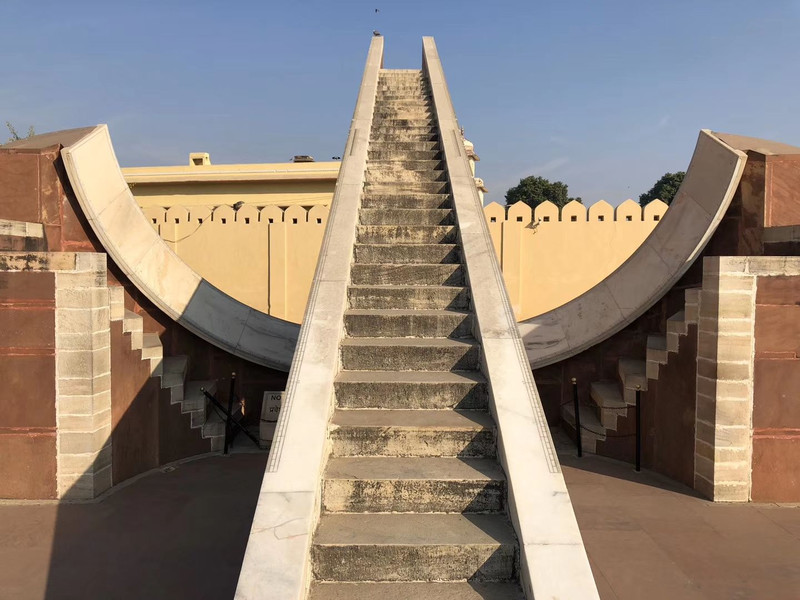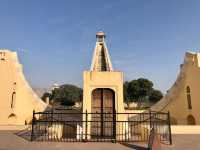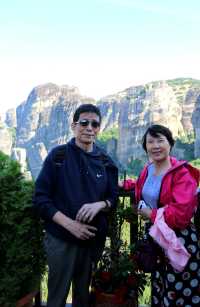The Janta Manta Observatory in Jaipur, India, is the most important, comprehensive, and well preserved ancient observatory in India and is a UNESCO World Heritage Site. It is composed of 19 astronomical instruments with fixed installations as the main body. These astronomical instruments are immortal works of ancient observation devices known and have their own characteristics in many ways. The Samurai dice in the observatory is the world's largest stone dice. The word Janta Manta comes from Sanskrit. Literally means "computer of calculation." The Janta Manta Observatory was built during the reign of Savaj Jay Singh II and completed in 1738. It demonstrated the Indians' cosmos and ability to explore astronomy in the late Mughal era. The observatory is a masonry structure, while astronomical instruments are made of masonry and bronze. The observatory is a typical representation of Ptolemy-style positioning astronomy. The observatory also has a 12-constellation sculpture art park.
;
Jantar Mantar - Jaipur Review
4.5 /592 Reviews
Popular Destinations
Shanghai Travel | Murano Travel | Milan Travel | Qingdao Travel | Berlin Travel | Xi'an Travel | Paris Travel | Nanjing Travel | Emerald Travel | Santiago Travel | Port Macquarie Travel | Glasgow Travel | Aomori Travel | Torquay Travel | Krabi Travel | Nevers Travel | Orbetello Travel | Davao Travel | Yasawa Island Travel | Captain Cook Travel | Agde Travel | Eure-et-Loir Travel | Los Silos Travel | Nong Khai Province Travel | Rudesheim Travel | Jesolo Travel | Imphal Travel | Blois Travel | Jingzhou Travel | Bacoor Travel
Recommended Attractions at Popular Destinations
Bangkok attraction near me | Tokyo attraction near me | Manila attraction near me | Hong Kong attraction near me | Taipei attraction near me | Seoul attraction near me | Los Angeles attraction near me | New York attraction near me | Shanghai attraction near me | Kuala Lumpur attraction near me | Shenzhen attraction near me | Osaka attraction near me | Singapore attraction near me | Guangzhou attraction near me | London attraction near me | San Francisco attraction near me | Beijing attraction near me | Macau attraction near me | Bali attraction near me | Paris attraction near me | Ho Chi Minh City attraction near me | Orlando attraction near me | Jakarta attraction near me | Phuket attraction near me | Chicago attraction near me | Toronto attraction near me | Istanbul attraction near me | Cebu attraction near me | Dallas attraction near me | Seattle attraction near me
Popular Attractions
Ghibli Museum | Blue Tree Phuket | Warner Bros. Studio Tour Tokyo - The Making of Harry Potter | Penida Island | Moonlit Sanctuary Wildlife Conservation Park | Dreamworld | Puffing Billy Railway | Tropical Fruit World | SEA LIFE Sunshine Coast Aquarium | Taronga Zoo Sydney | Yangtze River Cableway | Shaanxi History Museum | Adrenalin Park | Eminonu Square | Air Force City Sports Complex (Challenger's Field) | Big Ben | Bund Sightseeing Tunnel | Alcalde Miguel Sánchez de Alcazar Ocaña Park | Val d'Astier | Swambhu Bajarangabali Mandir | Peacock Lane | Kasi Vishwanathar Temple | Masjid Mutiara Nurul Islam | Budda garden | Snorkeling St.Pierre | Imagem em homenagem a Nossa Senhora D'Abadia | Terme delle Masse di San Sisto | Xiaozha Sky Hole Scenic Area | Xi 'an City Wall | Disney California Adventure Park
Popular Travelogues
Bangkok Travelogue | Tokyo Travelogue | Hong Kong Travelogue | Seoul Travelogue | Los Angeles Travelogue | New York Travelogue | Shanghai Travelogue | Kuala Lumpur Travelogue | Shenzhen Travelogue | Osaka Travelogue | Singapore Travelogue | London Travelogue | Beijing Travelogue | Macau Travelogue | Bali Travelogue | Paris Travelogue | Phuket Travelogue | Toronto Travelogue
Payment Methods
Our Partners
Copyright © 2024 Trip.com Travel Singapore Pte. Ltd. All rights reserved
Site Operator: Trip.com Travel Singapore Pte. Ltd.
Site Operator: Trip.com Travel Singapore Pte. Ltd.
